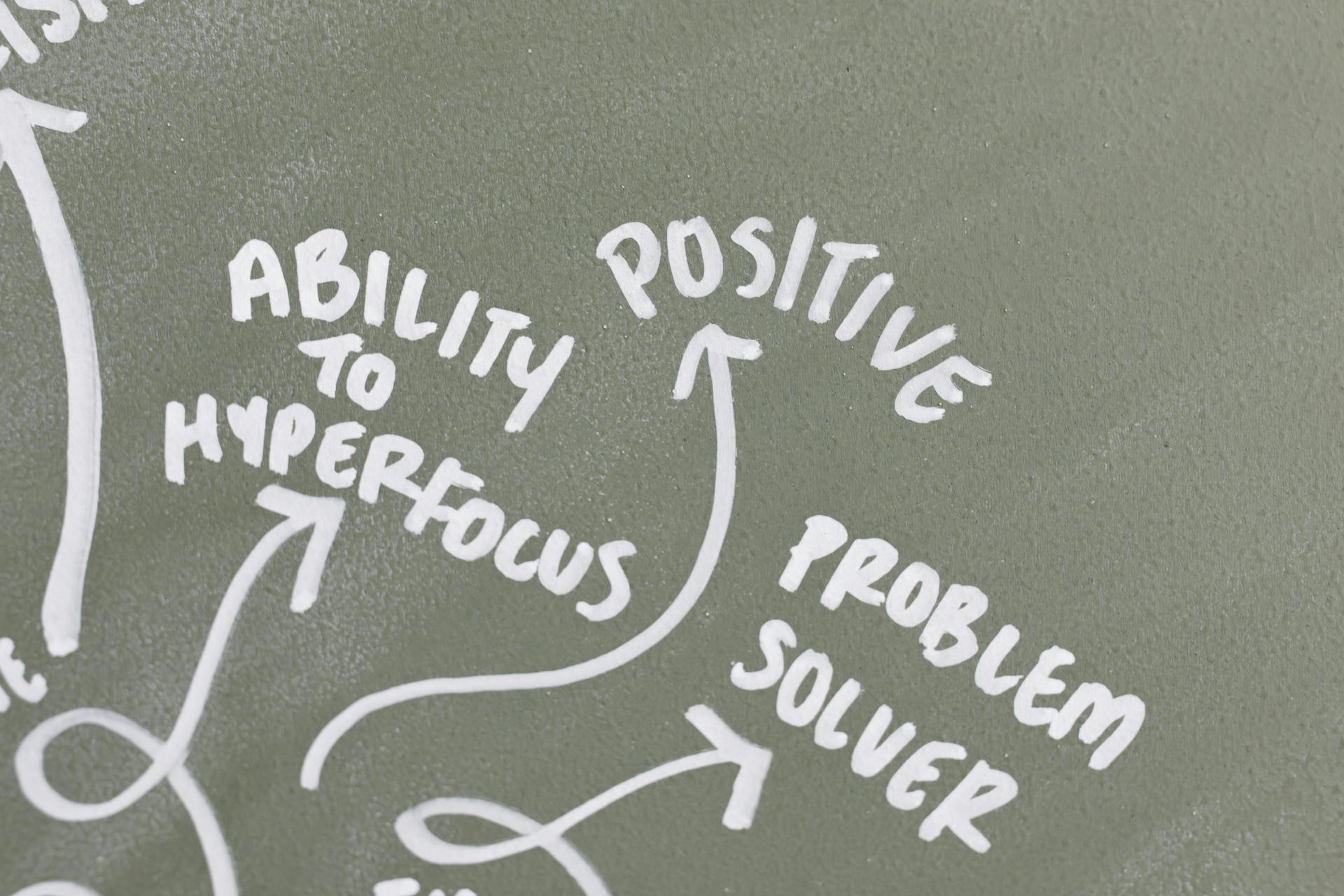Have you ever felt stuck on a problem? Maybe it was a tricky math problem, a coding bug, or a difficult decision at work. We all face problems regularly that test our problem-solving abilities.
Some people seem to be naturally better at solving problems than others. But what exactly makes someone a good problem solver? Is it just raw intelligence? Or are there specific skills, mindsets, and strategies that effective problem solvers employ?
In this post, we’ll dive deep into the qualities that define a skilled problem solver. We’ll look at mental tools, background knowledge, personality traits, and step-by-step processes that can help anyone improve their problem-solving prowess.
Let’s explore what separates the problem pros from the problem-challenged masses.
Key Traits of Masterful Problem Solvers
While problem-solving prowess involves specific strategies, there are also key personality traits and thinking styles that characterize effective problem-solvers.
Let’s explore some of the most important ones.
Curiosity
“I have no special talents. I am only passionately curious.” – Albert Einstein
Good problem solvers have insatiable curiosities. They ask endless “what if?” questions. They wonder why things are the way they are. Curiosity drives them to poke, probe, and explore problems from multiple angles.
Rather than taking situations at face value, the curious mind constantly seeks deeper understanding. This inquisitive mindset is invaluable for recognizing non-obvious aspects of a problem others may overlook.
Open-mindedness
Closed-minded people struggle with solving problems because they get stuck in rigid ways of viewing situations. In contrast, open-minded thinkers can adapt their perspectives.
They don’t cling stubbornly to their initial notions about approaching a problem. They remain eager to consider alternative interpretations as new information emerges.
The open-minded problem solver is also more willing to accept criticism and to revise their problem-solving strategies if they prove ineffective. Their mental flexibility allows them to course-correct more easily.
Patience and Persistence
Difficult problems rarely yield immediate solutions. They require sticking with them, chipping away at them relentlessly over time.
Good problem solvers don’t give up easily. They understand that making progress towards a solution involves working through plenty of failure and confusion along the way.
Patience allows them to keep trying new angles after their first attempts hit dead ends. Their persistence also enables deeper levels of understanding to take shape gradually, which paves the way for creative breakthroughs.
Comfort with Ambiguity
Many problems start out ill-defined and ambiguous. There are missing pieces of information, multiple valid interpretations of the problem space, and uncertainty about how to proceed.
Less effective problem solvers tend to feel excessive anxiety around ambiguity. They want to resolve it prematurely by forcing clarity onto situations before they fully understand them.
In contrast, skilled problem solvers have a high tolerance for ambiguity. They can comfortably immerse themselves in muddled, unclear problem contexts. They know clarity often emerges slowly through exploring the ambiguities in depth.
Mental Strategies Used by Problem-Solving Aces
Beyond personality traits, masterful problem solvers employ specific mental strategies when grappling with tough problems.
Here are some of their most powerful cognitive tools.
Breaking It Down
“If I could explain it to the average person, I wouldn’t have been worth the Nobel Prize.” – Richard Feynman
Chunking is critical for problem-solving. Rather than being overwhelmed by complex problems, experts break them into manageable sub-problems or sub-goals.
They recognize that while the full problem may be inscrutable initially, they can make step-wise progress by subdividing it into smaller pieces they can understand.
As psychologist Carl Jacobi said, “Man muss immer umkehren” (“One must invert”). By breaking things down, we can unravel and reshape an intimidating problem into workable tasks.
Thinking in Reversible Steps
Related to chunking, skilled problem-solvers avoid getting trapped by making irreversible moves too soon. They think ahead to find reversible decision points.
For example, in chess, great players consider potential sequences of moves, realizing any position reached still leaves other branches to explore. Each move can be reversed or rethought.
Thinking reversibly frees the problem solver to explore riskier lines of thought without fearing they’ll get permanently stuck. It encourages judicious experimentation rather than rash leaps.
Making It Concrete
Our working memory for abstractly manipulating information is quite limited. An effective problem-solving technique is to externalize or concretize the pieces of a problem.
For example, expert mathematicians use scratch work to extend their working memory. A chess player may set up a physical board to visualize various scenarios unfolding.
Translating parts of an abstract problem into concrete representations makes them easier to scrutinize, compare, and manipulate without overtaxing working memory.
Considering Multiple Perspectives
Viewing a problem through a fresh lens can suddenly reveal its solution. One’s initial perspective can blind them to important considerations.
Skilled problem solvers make a habit of hijacking their viewpoint. They intentionally adopt different frames of reference, especially those of people unlike themselves.
This mental repositioning is like using a camera to take pictures of the problem space from completely new angles. It sheds light on previously obscured aspects and assumptions.
The Importance of Background Knowledge
While problem-solving strategies and mental tactics are crucial, content knowledge also plays a big role in effective problem-solving solving.
The more conceptual knowledge and experience one has about the domain surrounding a problem, the more “tools” they have to potentially apply towards a solution.
For example, an experienced carpenter is more equipped to troubleshoot problems related to woodworking projects than a complete novice. They understand the peculiarities of various wood types, tool uses, joinery techniques and so on – specialized knowledge that illuminates the problem space.
So while generalized problem-solving strategies are powerful, they are most potent when combined with rich domain-specific knowledge. The problem solver’s toolkit is fullest when it contains both strategizing skills and a wealth of factual, procedural and conceptual understanding about the problem situation.
Problem-Solving Processes That Work
In addition to general tactics and specialized knowledge, there are battle-tested systematic processes that can guide effective problem-solving as well. Here are two examples:
The 5-Step Model
- Identify the problem
- Explore data/representations
- Generate possible solutions
- Evaluate and select best solution
- Implement and monitor the solution
This linear approach forces the problem solver to gain clarity on the problem itself before rushing into solutions. It emphasizes understanding the current state through data analysis.
Only once the “as-is” situation is crystallized do you move into ideating potential solutions. This bifurcation between problem definition and solution generation prevents flailing around unproductively.
The Origin Story Method
While the 5-step model is logical, some problems benefit from a more free-form narrative approach. This is where the “Origin Story” method can shine:
- Articulate the origin/root cause of the problem
- Describe the current undesirable state in vivid detail
- Envision and describe the ideal future state
- Trace the sequence of events between the origin and the ideal future
- Identify the bottlenecks and binding constraints along that path
- Brainstorm ways to alleviate each constraint
By starting with the genesis of the problematic situation, you build a rich contextual understanding. Visualizing the desired end-state provides clarity on the goal.
Mapping the journey between the two highlights the pinch points requiring creative problem-solving. This narrative framing attunes you to crucial nuances that point-based methods may overlook.
Both of these processes demonstrate that skilled problem-solving involves more than just creativity and inspiration. It requires following disciplined protocols for thoroughly understanding problems before attacking them.
Metacognition and Growth Mindset
At the highest level, perhaps the most meta-skill for effective problem solving is…being aware of your own problem-solving abilities and psychological tendencies.
This metacognitive awareness allows you to play strengths against weaknesses.
For example:
- If you tend to satisfy too quickly with initial surface-level solutions, you know to doublecheck your work through a systematic process.
- If you tend to get paralyzed by ambiguity and uncertainty, you build patience for marinating in the muddled middle.
- If you find yourself frequently stuck in mental ruts, you learn techniques for jolting your perspective.
Skilled problem solvers don’t just wield problem-solving tools adeptly. They are students of their own flawed psychology and cognitive biases as problem solvers.
This higher-order self-awareness, combined with a growth mindset about one’s problem-solving capabilities, is the ultimate meta-skill. It’s what allows you to keep strategically developing and expanding your problem obliteration toolkit over time.
TL;DR
What makes someone a good problem solver? At the core, it involves:
- Valuable traits like curiosity, open-mindedness, patience and ambiguity tolerance
- Mental strategies like chunking, reversible thinking, concretizing abstractions, and perspective-taking
- Domain-specific content knowledge and experiences to leverage
- Disciplined problem-solving processes like the 5-step model or origin story method
- Metacognitive self-awareness to strategically develop one’s skills over time
While raw intelligence is certainly helpful for problem-solving, truly great problem-solvers have intentionally cultivated a whole arsenal of psychological tools and mental capabilities.
Q&A
Q: Isn’t problem-solving mostly just common sense?
A: While common sense and basic reasoning abilities are important, world-class problem-solving requires much more than that. It takes specialized knowledge, creativity, strategic thinking, and dedication to honing one’s problem-attacking skills over many years of practice.
Q: Why is it so hard for smart people to solve certain types of problems?
A: Even brilliant people can struggle with problems that don’t align with how their specific type of intelligence is wired. For example, mathematically gifted people may be stymied by complex social problems. That’s why well-rounded problem solvers develop tools for all types of problems.
Q: How can someone get better at problem solving?
A: Improved problem-solving is a matter of continual practice, immersing yourself in different problem domains to expand your knowledge base, and intentionally studying/developing your psychological problem-solving tools like the strategies covered in this post.
Q: Is there one perfect problem-solving process to follow?
A: No, there is no single ideal process. Different problems call for different approaches and tactics based on the situation. The most masterful problem solvers are versatile – they have multiple processes, strategies and perspectives at their disposal to selectively apply.
Q: How does problem-solving differ for big existential problems versus practical daily problems?
A: While the fundamental cognitive strategies may be similar, the scope and implications of existential problems make them far more complex, ambiguous, and high-stakes. Daily practical problems tend to be more contained. The greatest problem solvers can toggle between those extreme problem categories.
Problem Solving Skills Self-Assessment Quiz
- When working on a difficult problem, I tend to: A) Quickly propose a plausible solution to resolve the ambiguity B) Spend time upfront to deeply understand the roots of the problem
- If my initial problem-solving attempts fail, I am most likely to: A) Get frustrated and give up B) Patiently explore other approaches and perspectives
- When thinking about a complex problem, I find it most helpful to: A) Discuss the abstraction verbally to push my understanding B) Create concrete visualizations, diagrams or objects
- For novel problems with lots of ambiguity, I tend to: A) Lay out a linear step-by-step plan to follow B) Employ a more freeform, narrative framing of the problem
- In general, my approach to developing my problem-solving abilities is: A) I don’t think much about it – I just rely on my natural talents B) I intentionally study my strengths/weaknesses and work on expanding my skills
Scoring: Give yourself 1 point for each B answer.
0-1 points: Your problem-solving skills could use some intentional development! This post highlighted many areas to improve.
2-3 points: Not bad, you have some problem-attacking tools, but there’s room to expand your capabilities.
4-5 points: Excellent! You exhibit many habits of a masterful problem solver. Keep honing that craft.





